-
 bitcoin
bitcoin $122659.385674 USD
0.52% -
 ethereum
ethereum $4484.113342 USD
-0.09% -
 bnb
bnb $1304.229256 USD
-0.85% -
 tether
tether $1.000204 USD
-0.03% -
 xrp
xrp $2.860636 USD
-0.51% -
 solana
solana $227.288799 USD
2.36% -
 usd-coin
usd-coin $0.999805 USD
0.01% -
 dogecoin
dogecoin $0.252837 USD
1.18% -
 tron
tron $0.341149 USD
1.12% -
 cardano
cardano $0.830507 USD
0.33% -
 hyperliquid
hyperliquid $45.792319 USD
0.04% -
 chainlink
chainlink $22.422164 USD
1.55% -
 ethena-usde
ethena-usde $1.000283 USD
0.01% -
 sui
sui $3.511389 USD
0.83% -
 stellar
stellar $0.385276 USD
-0.44%
What happens if a mining pool finds a block?
When a mining pool finds a valid block, it's verified and propagated across the network; rewards are then distributed to miners based on their contributed work, minus a small pool fee.
Jul 24, 2025 at 10:00 pm
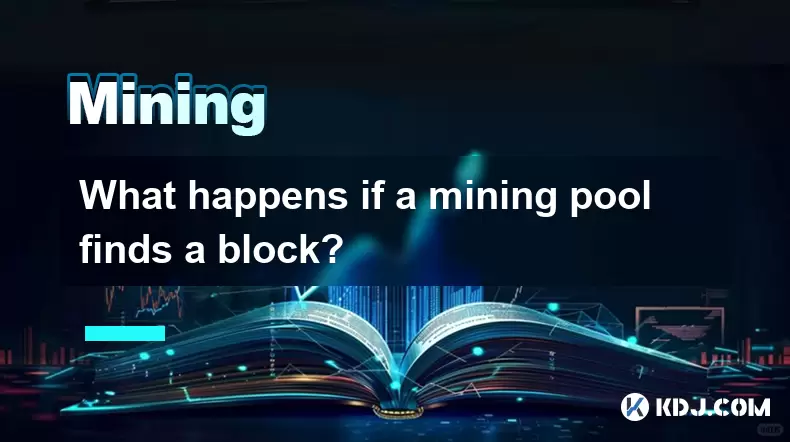
Understanding the Role of a Mining Pool
A mining pool is a collective of cryptocurrency miners who combine their computational power to increase the likelihood of successfully mining a new block on a blockchain network. Individually, miners may struggle to find blocks due to the high difficulty and randomness of the mining process. By pooling resources, participants improve their chances of earning consistent rewards. When a block is found, the process of validation, reward distribution, and transaction inclusion begins immediately. The success of the pool hinges on efficient coordination and transparent communication among its members.
The moment a miner within the pool discovers a valid block, that miner broadcasts the solution to the pool’s server. The server verifies the block’s validity against the network’s consensus rules. This includes checking the proof-of-work (PoW), ensuring all transactions in the block are legitimate, and confirming the block header hashes below the network target. Once verified, the pool relays the block to the broader blockchain network for acceptance.
Block Propagation and Network Confirmation
After the pool server validates the newly found block, it is propagated across the peer-to-peer network. Nodes in the network receive the block and independently verify its contents. If the block meets all consensus requirements, nodes accept it and append it to their copy of the blockchain. This process ensures decentralization and prevents fraudulent blocks from being accepted.
The first confirmation occurs as soon as the block is added to the chain. Subsequent blocks mined on top of it increase the confidence in its permanence. Transactions within the block are now considered progressively more secure. The pool’s success directly impacts transaction finality and network throughput, especially during periods of high congestion.
Reward Distribution Mechanisms
Once the block is confirmed by the network, the mining pool initiates reward distribution. The total block reward consists of two components: the block subsidy (newly minted coins) and transaction fees from all transactions included in the block. The pool operator collects this combined reward and distributes it among participants based on their contributed work.
Different pools use various reward systems, such as:
- Pay-per-Share (PPS): Miners receive a fixed payment for each valid share they submit, regardless of whether the pool finds a block. The pool absorbs the risk.
- Proportional (PROP): Rewards are distributed proportionally after a block is found, based on the number of shares each miner contributed during that mining round.
- Pay-per-Last-N-Shares (PPLNS): Rewards are calculated based on the last N valid shares submitted before the block was found, discouraging pool hopping.
- Score-based systems: Shares are weighted by age and difficulty, giving more recent contributions higher value.
Each method affects payout frequency, variance, and miner incentives. Pools typically deduct a small fee, usually between 1% and 3%, to cover operational costs.
Calculating Individual Payouts
To determine how much each miner earns, the pool tracks share difficulty and submission frequency. A 'share' is a proof of work that meets a lower target than the actual blockchain, allowing the pool to measure each miner’s contribution.
Suppose the pool uses the PPLNS model and the last 10 million shares are considered for distribution. A miner who submitted 500,000 valid shares during that window contributed 5% of the total work. If the block reward is 6.25 BTC plus 0.25 BTC in fees (total 6.5 BTC), the miner’s gross reward is:
5% of 6.5 BTC = 0.325 BTCAfter applying a 2% pool fee, the net reward becomes:
0.325 BTC × 0.98 = 0.3185 BTCThis amount is then sent to the miner’s registered payout address. Most pools allow miners to set minimum payout thresholds to reduce transaction fees from frequent micro-payments.
Handling Orphaned and Stale Blocks
Not every block found by a mining pool becomes part of the longest valid chain. If two pools find blocks at nearly the same time, the network may temporarily accept both. Eventually, one chain becomes longer, and the other block becomes orphaned or stale. Miners in the pool that found the rejected block do not receive rewards.
To minimize this risk, pools optimize block propagation speed and maintain low-latency connections with the network. Some pools implement getblocktemplate (GBT) or Stratum protocols to ensure rapid distribution of work and quick submission of solutions. Despite best efforts, stale rates of 0.5% to 2% are common in large pools.
Miners are generally not compensated for work on stale blocks unless the pool uses a full pay-per-share model, where the pool operator bears the loss. In most cases, only work contributing to a successfully confirmed block results in payouts.
Security and Trust in Pool Operations
Transparency is critical in maintaining trust between the pool operator and miners. Reputable pools provide real-time dashboards showing hash rate, recent blocks, estimated earnings, and payout history. Miners can audit their submitted shares and compare them with recorded contributions.
Some pools support merged mining, allowing miners to simultaneously work on multiple blockchains using the same hash power. Others offer SSL encryption and two-factor authentication (2FA) to protect miner accounts from hijacking.
Despite these safeguards, centralization risks remain. A single pool controlling over 30% of the network hash rate could theoretically attempt a 51% attack, though doing so would undermine the currency’s value and harm the attacker’s own investment. Most miners choose pools based on reputation, uptime, fee structure, and geographic distribution to balance profitability and network health.
Frequently Asked Questions
Can a single miner in the pool claim the entire block reward?No. The block reward is sent to the pool’s designated wallet address, not to the individual miner who found the block. The pool operator controls the reward distribution according to the agreed-upon payout scheme. Even if one miner submits the winning share, they only receive a portion based on their contribution.
What happens if the pool finds a block but it’s later rejected by the network?If the block is invalid due to incorrect transactions, double-spends, or failed PoW verification, nodes will reject it immediately. No reward is issued, and the pool receives nothing. Miners do not get paid for such attempts, as the block never becomes part of the official ledger.
How quickly are rewards distributed after a block is found?Most pools distribute rewards within minutes to hours after block confirmation. Some require a certain number of confirmations (e.g., 3–6) before initiating payouts to reduce the risk of chain reorganization. Automated systems handle transfers once conditions are met.
Do all miners in the pool receive the same payout method?Yes. The payout method is set by the pool operator and applies uniformly to all participants. Miners must accept the pool’s chosen system when connecting their mining rigs. Some pools allow switching between methods, but this is rare and usually requires reconfiguration.
Disclaimer:info@kdj.com
The information provided is not trading advice. kdj.com does not assume any responsibility for any investments made based on the information provided in this article. Cryptocurrencies are highly volatile and it is highly recommended that you invest with caution after thorough research!
If you believe that the content used on this website infringes your copyright, please contact us immediately (info@kdj.com) and we will delete it promptly.
- Charlie Lee, Litecoin, and Regret: A NY Perspective
- 2025-10-10 00:45:15
- Cryptocurrencies, Bitcoin, & Market Analysis: Navigating the New Financial Landscape
- 2025-10-10 00:45:15
- Algorand, Chainlink, and BlockDAG: Navigating the Crypto Landscape in 2025
- 2025-10-10 00:50:12
- SUI, DOGE, and Digitap Growth: Navigating the Crypto Landscape in Style
- 2025-10-10 01:25:16
- Polymarket's POLY Token: Hype or the Next Big Thing?
- 2025-10-10 00:50:12
- Whitelist, Crypto, Utility: Decoding the Hottest Trends in Web3
- 2025-10-10 00:25:15
Related knowledge

The difference between staking and mining
Sep 24,2025 at 05:18am
Understanding Staking in the Cryptocurrency Ecosystem1. Staking involves holding funds in a cryptocurrency wallet to support the operations of a block...

How to participate in testnet mining?
Sep 22,2025 at 09:18am
Understanding Testnet Mining in the Crypto Ecosystem1. Testnet mining is a method used by blockchain developers to simulate real-world conditions on a...

How to dispose of abandoned mining machines?
Sep 19,2025 at 08:19pm
Assessing the Condition of Abandoned Mining Rigs1. Begin by inspecting each mining machine for visible damage, corrosion, or missing components. Machi...

How to identify high-quality mining pools?
Sep 21,2025 at 03:19pm
Reputation and Track Record1. A mining pool’s reputation is built over time through consistent performance and transparency. Pools that have operated ...

Advantages of decentralized mining pools
Sep 20,2025 at 04:36pm
Enhanced Security and Resistance to Censorship1. Decentralized mining pools operate on blockchain-based smart contracts, eliminating the need for a ce...

What is mining machine overclocking?
Sep 21,2025 at 07:19pm
Understanding Mining Machine Overclocking1. Mining machine overclocking refers to the process of increasing the operating frequency of a cryptocurrenc...

The difference between staking and mining
Sep 24,2025 at 05:18am
Understanding Staking in the Cryptocurrency Ecosystem1. Staking involves holding funds in a cryptocurrency wallet to support the operations of a block...

How to participate in testnet mining?
Sep 22,2025 at 09:18am
Understanding Testnet Mining in the Crypto Ecosystem1. Testnet mining is a method used by blockchain developers to simulate real-world conditions on a...

How to dispose of abandoned mining machines?
Sep 19,2025 at 08:19pm
Assessing the Condition of Abandoned Mining Rigs1. Begin by inspecting each mining machine for visible damage, corrosion, or missing components. Machi...

How to identify high-quality mining pools?
Sep 21,2025 at 03:19pm
Reputation and Track Record1. A mining pool’s reputation is built over time through consistent performance and transparency. Pools that have operated ...

Advantages of decentralized mining pools
Sep 20,2025 at 04:36pm
Enhanced Security and Resistance to Censorship1. Decentralized mining pools operate on blockchain-based smart contracts, eliminating the need for a ce...

What is mining machine overclocking?
Sep 21,2025 at 07:19pm
Understanding Mining Machine Overclocking1. Mining machine overclocking refers to the process of increasing the operating frequency of a cryptocurrenc...
See all articles
















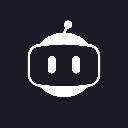
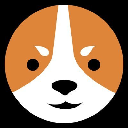
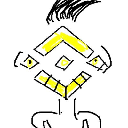


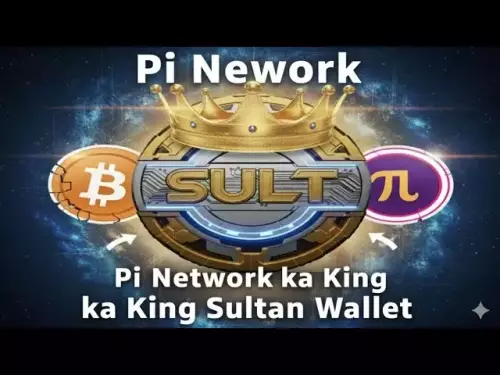




![🚨IS VECHAIN (VET) A DEAD COIN ?? PRICE ANALYSIS [GET READY NOW] 🚨IS VECHAIN (VET) A DEAD COIN ?? PRICE ANALYSIS [GET READY NOW]](/uploads/2025/10/09/cryptocurrencies-news/videos/vechain-vet-dead-coin-price-analysis-ready/68e7b200b067b_image_500_375.webp)















































